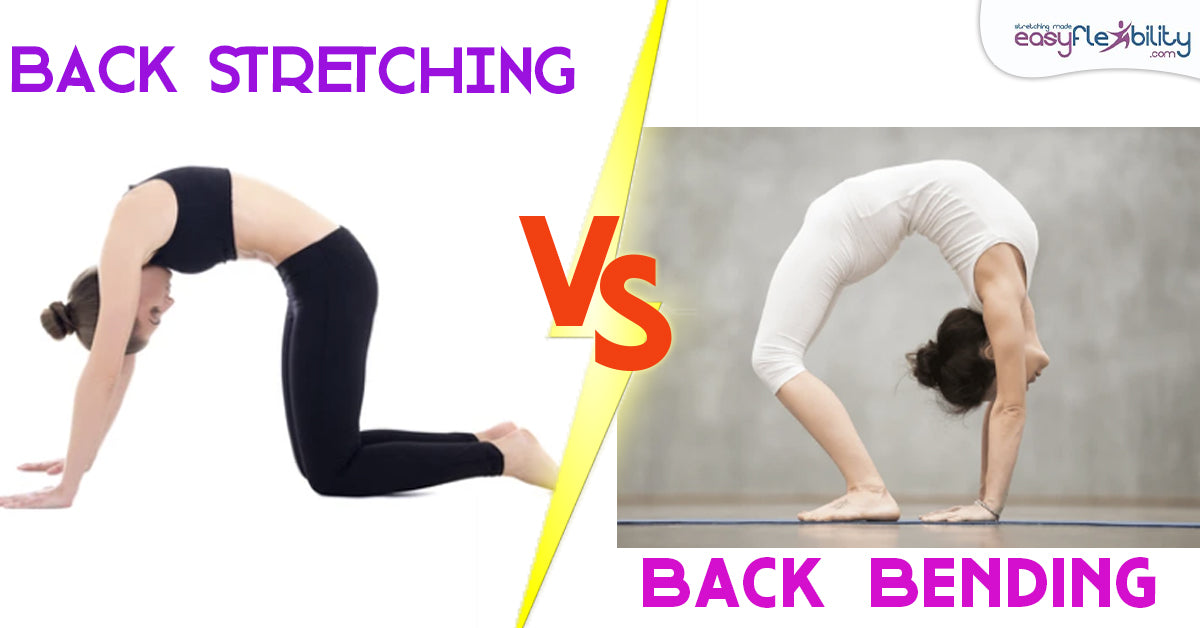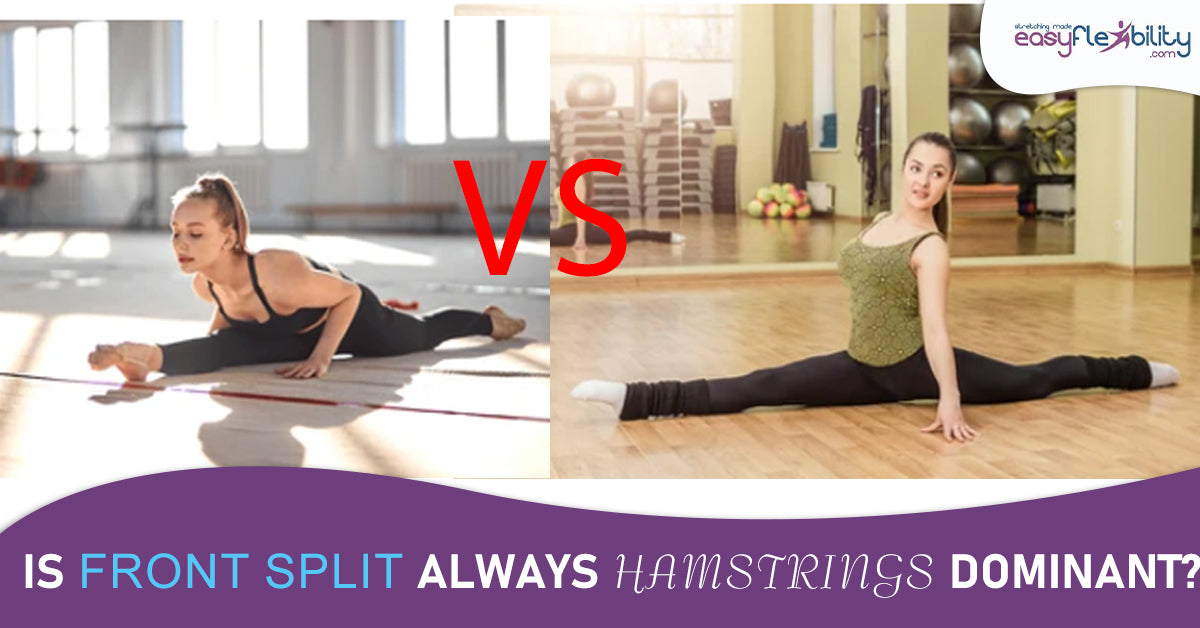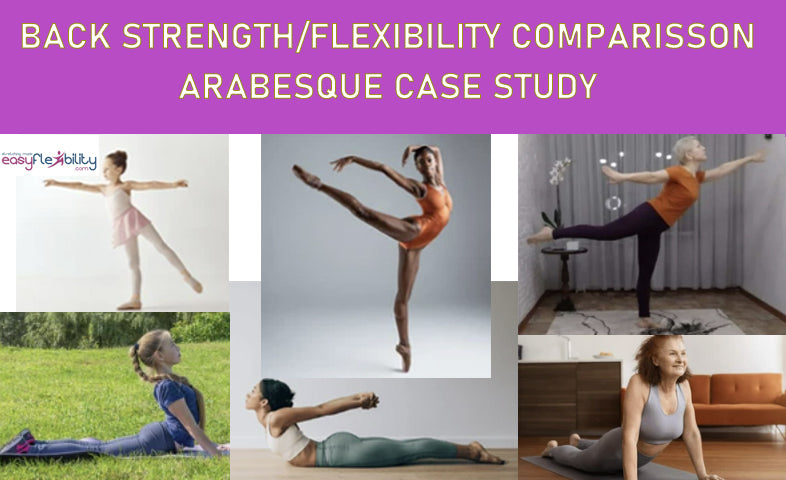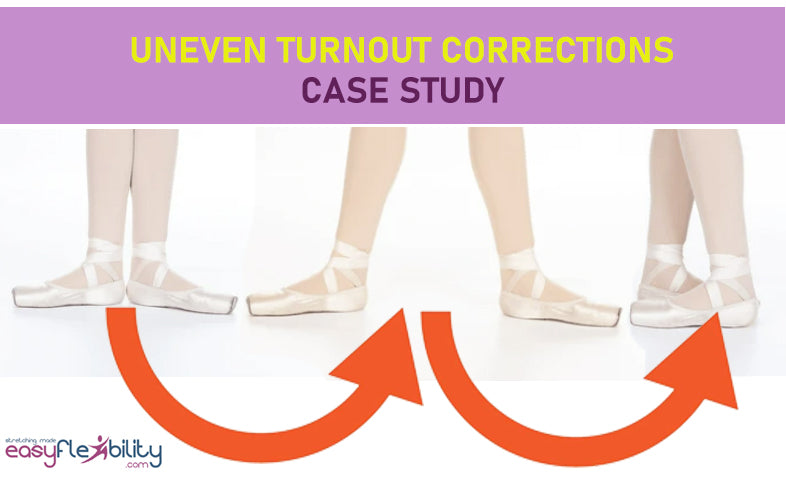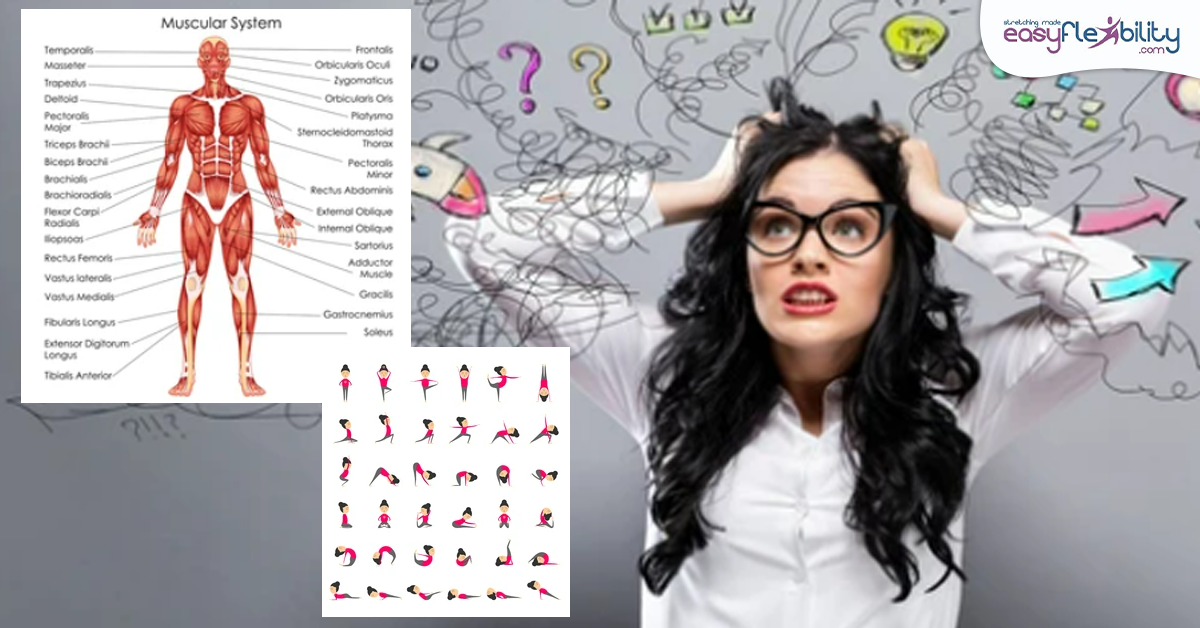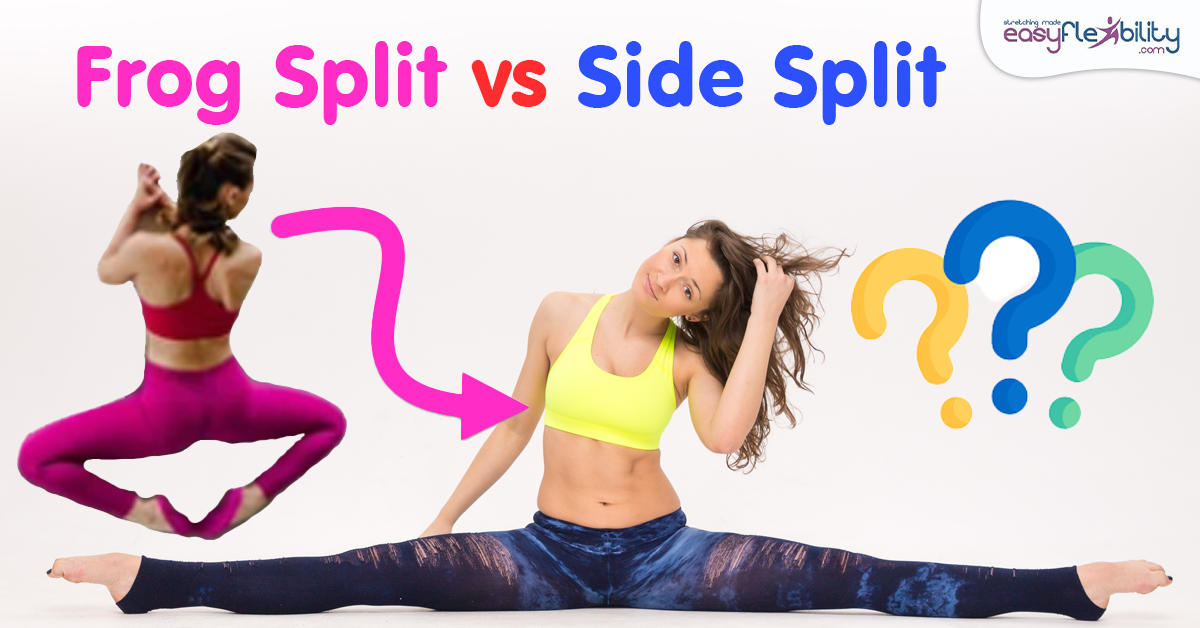We Polled Hundreds of People: Why You’re Not Getting Flexible (And How to Fix It)
Posted by EasyFlexibility Team on
Top 10 Reasons Why You’re Not Getting Flexible After Years of Stretching

Stretching is often seen as the key to unlocking better movement, preventing injuries, and enhancing performance in activities like dance, yoga, and martial arts. Yet, despite putting in the time and effort, many people feel like they’re not seeing the flexibility progress they expect.
Why am I not getting more flexible after stretching?
This is a common frustration, so we decided to poll hundreds of individuals—none of whom are EasyFlexibility customers—about their experiences. These are people who have been stretching consistently for years but still struggle to reach their flexibility goals.
Here are the Top 10 Reasons they gave for why they think they’re not becoming more flexible.
1. “I’m Stretching the Wrong Way”

Many respondents believe they’re doing the wrong type of stretches. Whether it’s not targeting the right muscles or misunderstanding proper form, people often feel that their technique is holding them back. Without proper guidance, they feel they’re not maximizing their stretching potential.
Step-by-step solution:
- Ensure your stretches are targeting the right muscles.
- Use Zaichik Stretching Techniques (ZST) to isolate muscles and improve precision. This method is key to the EasyFlexibility approach.
Real-Life Example:
Take Anna, an EasyFlexibility user who was stuck in her flexibility journey. After switching to ZST, she began seeing steady progress in just a few weeks.
2. “I Don’t Stretch Consistently Enough”

Consistency is critical for flexibility! Many people admitted that, while they understand flexibility requires regular effort, life gets busy, and stretching becomes sporadic. This inconsistency can stop long-term progress.
How to improve consistency:
- Set a daily or weekly stretching routine.
- Follow a progressive training program like EasyFlexibility’s Side Splits Program.
- Pair your stretches with dynamic exercises to keep your routine engaging.
Pro Tip:
Even 10 minutes of consistent proper stretching every other day can help you reach your goals faster than sporadic, longer sessions.
3. “I’m Not Incorporating Active Flexibility”
Many people focus solely on passive stretching—where you hold a position for a certain amount of time—without incorporating active flexibility exercises. Passive stretching may increase your range of motion, but active flexibility builds strength in those extended positions, making the gains more functional and long-lasting.
Actionable Steps for Active Flexibility:
- Add Dynamic Movements: Include dynamic, controlled movements in your routine to actively engage your muscles while stretching. This helps you build strength while improving flexibility.
- Use Progressive Resistance Techniques: Try incorporating resistance bands or bodyweight movements that require you to move into and out of deep stretches using muscle control.
Why It Matters:
Active flexibility improves not only how far you can stretch, but also how much control you have in that range of motion. This control is key for preventing injuries and making your flexibility gains useful in real-life movements.
I Hold My Stretches for a Long Time, But I Still Don’t See Results

Many people think that holding a stretch for a long time will eventually improve flexibility. However, holding stretches for long durations doesn’t necessarily lead to flexibility gains. In fact, in the EasyFlexibility system, we never hold stretches with the aim of getting flexible.
Why Holding Stretches Doesn’t Work:
In the EasyFlexibility system, we never hold a stretch for the purpose of improving flexibility. Instead, we use unique techniques called Zaichik Stretching Techniques (ZST), which actively increase flexibility without waiting out the stretch reflex. The goal of any stretch—whether it's a passive relaxed stretch, dynamic stretch, or ZST—is to increase functional muscle length, and holding a stretch passively doesn’t achieve that efficiently.
What’s the Problem with Passive Stretching?
Traditional stretching methods, like those used in yoga or dance, often rely on holding the stretch long enough for the muscle to "give in" and stretch further. However, this can backfire. When you hold a stretch passively, the nervous system becomes uncomfortable and actually starts fighting against the muscle lengthening. This limits your progress and can even cause unnecessary tension.
By using ZSTs, you bypass the discomfort caused by the nervous system and allow your muscles to lengthen in a safe, controlled, and effective manner.
5. “I’m Not Warmed Up Properly Before Stretching”

A common issue many people face is skipping a proper warm-up. Stretching cold muscles not only makes flexibility improvements harder but also increases the risk of injury.
In the EasyFlexibility system, we go beyond the typical warm-up by incorporating specialized mobility exercises. These exercises target each joint, keeping them healthy and lubricated while preparing them for more intense flexibility work.
We also utilize skill-specific warmup exercises to gradually prepare your body for advanced movements like splits or other challenging flexibility goals. This ensures that your body is ready for the specific skills you're training for, not just general stretches.
Warm-Up Tips:
- Start with 5-10 minutes of light cardio, like jumping jacks or jogging, to increase your heart rate and get blood flowing to your muscles.
Tip:
Research shows that warming up increases range of motion and reduces the risk of injury (source: Harvard Health).
6. “I Don’t Focus on My Breathing”
A number of people admitted to neglecting the mind-body connection, especially through breathing. They recognized the importance of breathing deeply but confessed they often hold their breath, preventing them from relaxing into their stretches.
Improve your flexibility through breathing:
- Inhale deeply through your nose as you prepare for a stretch.
- Exhale slowly as you relax into the stretch, allowing your muscles to release tension.
Pro Tip:
Incorporating breathing techniques can help you relax and deepen your stretches, leading to better results.
7. "My Daily Routine is Sabotaging My Flexibility Progress"

For many people, daily activities like sitting at a desk for long hours or engaging in repetitive movements contribute to muscle tightness, especially in the hip flexors. Let's take hip flexors as an example. The muscles get used to certain positions, and this habitual shortening can lead to significant tightness over time. When you sit for extended periods, your body "learns" that this is the preferred length for the muscles, causing your hip flexors to shorten.
However, not all hip flexors tighten equally. For instance, the psoas muscle might shorten more than others, depending on your posture and activity level. This is why it’s essential to isolate and stretch each muscle separately—and that’s exactly what Zaichik Stretching Techniques (ZST) do. They focus on isolating specific muscles, stretching them one at a time to ensure you target the exact area that’s tight.
What Causes Tightness in the Hip Flexors?
- Prolonged Sitting: Sitting for long hours causes hip flexors, like the psoas, to shorten because the muscles get accustomed to being in that position.
- Repetitive Use in Shortened Ranges: Activities like sit-ups, leg lifts, and isometric contractions where the hip flexors remain in a shortened position (like L-sits or V-sits) can make these muscles adapt and become tighter over time.
- Injury or Scar Tissue: Past injuries, surgeries, or inflammation can lead to muscle tightness, as the body compensates to protect weakened joints.
- Emotional Stress: Even trapped emotions and mental stress can manifest as physical tightness in areas like the hips.
How to Fix It:
To address these issues, it’s important to isolate each hip flexor and stretch it individually. EasyFlexibility’s Zaichik Stretching Techniques are perfect for this, as they target each specific muscle, allowing you to lengthen them without the interference of surrounding muscles. Regular mobility exercises, combined with ZST, can counteract the effects of a sedentary lifestyle and repetitive movements, helping you regain flexibility in your hip flexors.
By incorporating these specialized techniques, you can prevent your daily routine from sabotaging your flexibility progress and start making real gains.
8. “I Don’t Push Myself Enough”

Many people believe that they need to push themselves hard, beyond their comfort zone, to make real flexibility gains. However, this isn’t necessary with the Zaichik Stretching Techniques (ZST) used in the EasyFlexibility system. Unlike traditional stretching methods that rely on force and discomfort, ZST is designed to work with your body, not against it, allowing you to safely achieve flexibility without straining or risking injury.
Why You Don’t Need to Push Yourself:
- ZST works with your body’s natural range of motion. Instead of forcing your muscles into uncomfortable positions, ZST techniques focus on isolating specific muscles and gently increasing their length.
- Gradual Progression: ZST encourages steady progress without the need to push past pain or discomfort. You’ll increase flexibility by working within your body’s current capabilities and gradually expanding them.
How to See Results Without Pushing Too Hard:
- Use ZST techniques to gently stretch your muscles in a controlled and safe way, without forcing anything.
- Allow your body to adapt naturally over time. You’ll see improvements as your muscles lengthen without the strain or risk associated with more aggressive methods.
- Track your progress with your Stretch180 app: as you gain flexibility with ease and precision, without ever needing to push beyond your comfort zone.
Success Story:
Carlos, an EasyFlexibility practitioner, safely advanced to full splits using ZST techniques after years of struggling with more traditional stretching methods. With ZST, he was able to make progress comfortably and effectively, without needing to push himself beyond what felt safe.
By using ZST, you can make significant flexibility gains without feeling the need to push yourself hard or endure discomfort. It’s about working with your body and allowing it to develop flexibility naturally.
9. “I’m Too Focused on the End Goal”

Several respondents confessed they were overly focused on achieving the end goal, like full splits or extreme flexibility. This led to frustration when they didn’t achieve it quickly, preventing them from enjoying the process and making progress.
Mindset Shift:
- Focus on the process, not the result.
- Set small, achievable goals to stay motivated by using EasyFlexibility's Stretch180 App.
- Celebrate every small gain as you work toward bigger goals.
10. “I Don’t Use Any Specific Program”

Many people admitted they didn’t follow any structured program. Instead, they pieced together random stretches but lacked a progressive routine that could lead to real improvement.
Best Stretching Routine:
- Follow a targeted flexibility program like those offered by EasyFlexibility.
- Stick to a routine that progressively builds on your current flexibility level.
What’s Holding You Back?

If any of these reasons resonate with you, you’re not alone! These insights highlight common challenges many people face when trying to improve flexibility.
The truth is, flexibility is achievable with the right approach. That’s where EasyFlexibility comes in! Unlike traditional methods that often fail to address the root causes of inflexibility, Paul Zaichik’s scientifically-backed Zaichik Stretching Techniques (ZST) offer a revolutionary solution.
Why EasyFlexibility Works:
- Scientifically designed by a world renowned fitness & flexibility expert Paul Zaichik, with over 30 years experience in the field.
- Isolates muscle action one by one (to ensure they are doing their job).
- Takes care of the muscles that are tighter first.
- Allows easier focus, since you are working on one specific area at a time.
- You can do it All on your own! No pushing or bouncing is necessary, not even a partner!
- Remember that phrase 'No Pain - No Gain?', well it doesn't apply to our method. Each stretch is designed to be PAIN-FREE! Thereby eliminating discomfort and allowing you to continue training to achieve faster results.
- Totally safe , since it was designed according to what is natural for your body.
- Gains are permanent and steady. It is very enjoyable to do.
- The approach of our programs is very different from standard stretching approaches. Instead of using other poses, for example such as in Yoga, other Asanas are used to prepare for a stretch, Zaichik Stretching Techniques are used to isolate each muscle being stretched which results in a pain free, fast, easy and safe stretching method.
- Results are visible right away since the stretch reflex is avoided, which means you'll get to show off your flexibility in no time!
Ready to Finally Unlock Your Flexibility?
If you’re tired of hitting a flexibility plateau and want to start making real progress, explore EasyFlexibility’s programs today! Unlock your true potential with methods designed to work smarter, not harder.
Ready to Become More Flexible? Try the Zaichik Stretching Technique to Release Your Psoas Right Now!
If you're eager to experience the benefits of the Zaichik Stretching Technique (ZST) for yourself, why wait? You can start right now by focusing on one of the most common areas of tightness—the psoas muscle. The psoas plays a crucial role in hip flexion, and releasing tension in this muscle can significantly improve your flexibility and overall mobility.
Watch This Free Tutorial:
Learn how to isolate and stretch your psoas muscle effectively using ZST by following this step-by-step guide

- Get into a lunge.
- Move front leg to the side.
- Bring right arm up.






Frequently Asked Questions (FAQ)
Q: Why am I not getting more flexible after years of stretching?
A: Many people struggle with flexibility despite years of stretching because they may be using ineffective techniques, stretching inconsistently, or focusing too much on one area of the body. The Zaichik Stretching Techniques (ZST) used in EasyFlexibility address these issues by isolating specific muscles and working with your body’s natural movements to safely and effectively improve flexibility.
Q: Do I need to hold my stretches for a long time to get flexible?
A: No, holding stretches for a long time is not necessary to improve flexibility. In the EasyFlexibility system, we never hold a stretch for the purpose of getting flexible. Instead, we use Zaichik Stretching Techniques (ZST) to isolate and stretch muscles in a way that works with your body, bypassing the discomfort that comes from holding stretches for extended periods.
Q: Why are my hip flexors always tight even though I stretch them?
A: Tight hip flexors can be caused by sitting for long periods, repetitive activities that shorten the hip flexors, or even emotional stress. The Zaichik Stretching Techniques isolate specific muscles, like the psoas, and stretch them effectively, unlike traditional stretches that don’t always target the right muscles. By focusing on the root cause, ZST helps release the tightness more efficiently.
Q: Do I need to push myself hard to improve my flexibility?
A: With the Zaichik Stretching Techniques (ZST), you don’t need to push yourself beyond your comfort zone. ZST works with your body’s natural range of motion, allowing you to gently increase your flexibility without risking injury. You’ll see steady progress without the discomfort or strain often associated with traditional stretching methods.
Q: How do I warm up properly before stretching?
A: In the EasyFlexibility system, we recommend a dynamic warm-up that includes 5-10 minutes of light cardio, like jumping jacks or jogging, followed by specialized mobility exercises for each joint to keep them healthy and lubricated. Additionally, skill-specific warmups help gradually prepare your body for challenging flexibility goals, like splits.
Q: What makes the Zaichik Stretching Techniques (ZST) different from other stretching methods?
A: Zaichik Stretching Techniques (ZST) are unique because they isolate and stretch individual muscles rather than forcing an entire muscle group to stretch. This technique works with your body’s natural reflexes, making it more efficient, safe, and comfortable. It prevents the nervous system from resisting the stretch, allowing you to improve flexibility without discomfort.
Q: How can I fix tight muscles caused by sitting all day?
A: Sitting for long periods causes muscles, especially the hip flexors, to shorten and become tight. In the EasyFlexibility system, we recommend taking regular stretch breaks, incorporating mobility exercises, and using Zaichik Stretching Techniques (ZST) to target and release tight muscles. This approach helps to counter the effects of prolonged sitting and prevents stiffness.
Q: How do I start using Zaichik Stretching Techniques?
A: You can begin incorporating Zaichik Stretching Techniques into your routine by following one of the EasyFlexibility programs. These programs are designed to isolate and stretch specific muscles, helping you achieve flexibility safely and efficiently.
Share this post
0 comment

